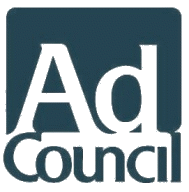Ready Communication Checks Research Proposal
Ready_Comm Checks Research Proposal_121814.doc
Ready PSA Campaign Creative Testing Research
Ready Communication Checks Research Proposal
OMB: 1660-0139

Emergency Preparedness Campaign
Communications Checks – Qualitative Research Recommendation
December 2014
Background
The
Ad Council is partnering with FEMA and the ad agency Schafer Condon
Carter to develop new public service advertisements for the Emergency
Preparedness Ready campaign. The new advertising, to be launched in
September 2015, is intended to further the campaign’s goal to
get Americans to prepare for emergencies. This effort will focus on
asking families to prepare a plan to meet with their families in the
event they are separated during a disaster. The campaign drives to
ready.gov where Americans can learn how to make a plan and take
further actions to prepare.
Research Objectives
Prior to producing the campaign advertising, it is important to measure the clarity, relevance, credibility and efficacy of the creative concepts among our core target audience of parents. We propose conducting qualitative research, which will be used to understand any potential red flags and to identify ways to optimize the creative so as to have the greatest likelihood to motivate the target audience. We will test multiple media executions that have been approved by FEMA.
What can a communications check help us learn?
Message Clarity: What are they trying to tell me?
Relevance: What does this mean for me? Are they talking to me or someone else?
Credibility: Do I believe what they’re saying?
Potential to motivate: Are the ads persuasive? Do they spur action to talk to their family and agree on a plan to meet? Do they inspire a visit to Ready.gov?
Can the creative work for the Hispanic market?
Any nuances to consider for the Spanish-speaking Hispanic audience?
What else can we learn?
Emotional reactions to each of the creative ideas. Given the emotional drivers for action, which creative messages pique emotional responses?
Points of confusion/clarity: Is there anything that could be cleared up to improve the communications?
Which mediums are working hardest towards the objective?
Strengths and weaknesses: How do we improve overall?
Most surprising: Is there anything in the campaigns that provided genuine surprise? Is this a good thing?
Recommended Vendor
TBD. A RFP process will follow.
Methodology
Five mini focus groups of 4 persons each per market (3 General Market and 2 Spanish-dominant Hispanic): This approach allows us to expose the creative to more people in less time and also better understand the group dynamic of how information might be shared with others. We will recruit 5 respondents per market to seat 4 (allowing for a no-show). Each session is planned for 75 minutes .
All creative concepts will be presented in rough, unfinished formats because the research is conducted prior to producing the PSAs. The agency will recommend the format for each media type, which will be shared with FEMA prior to the research.
Market selection: TBD. Two markets in distinct geographic regions with a mix of urban and suburban communities will be selected. We want to choose at least one market with high-risk for a no-notice event. (Note: NY OEM will be funding additional research in NYC as part of this project.)
Respondents will be screened to fit into the following profile:
Parents/Guardians with school-age children (ages 6-17) in the home
25-54 years old
Live in area at-risk for natural disaster or other emergency
Mix of gender
Mix of race/ethnicity (to reflect market), household income, and age across groups
Does not work in following industries: marketing, advertising, or emergency/first responder (fire fighter, EMT, etc)
Has not participated in market research study in past 6 months
Try to recruit respondents who report varying levels of emergency preparedness
Have not discussed a formal ‘meeting’ plan for family
Spanish language respondents should be dominant Spanish speakers who consume most media in Spanish
Must be comfortable (and articulate) sharing his/her opinion
Costs
The total cost for the study is anticipated at $40-45k. This cost will be covered in the current campaign budget.
Exact costs pending vendor and market selection.
Deliverables
Moderation in English and Spanish
Kick-off briefing calls with agency and Ad Council
Moderator guide refinement (Agency partners developed a Screener and Moderator Guide per federal research approval process; attached under separate cover)
Facility Rental
Respondent Screening and Recruitment
Respondent Incentive
Analysis/ Topline Report & Debrief Conference Call
Translation Services
If you have any questions on this research plan, please contact:
Regan Hill
Research Director | The Advertising Council
P: (202) 331-4211 | E: [email protected]
| File Type | application/msword |
| File Title | Ready Campaign |
| Author | Deb Charney |
| Last Modified By | Regan Hill |
| File Modified | 2014-12-19 |
| File Created | 2014-12-18 |
© 2025 OMB.report | Privacy Policy